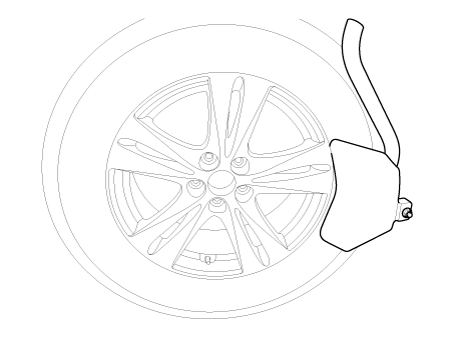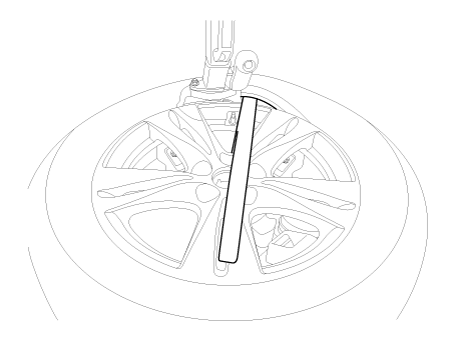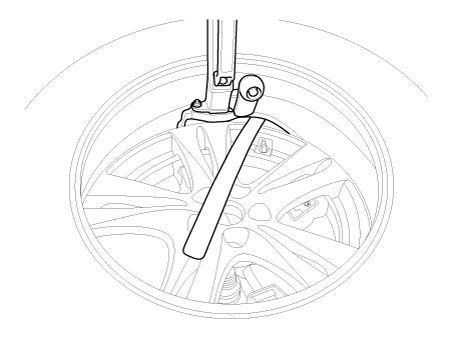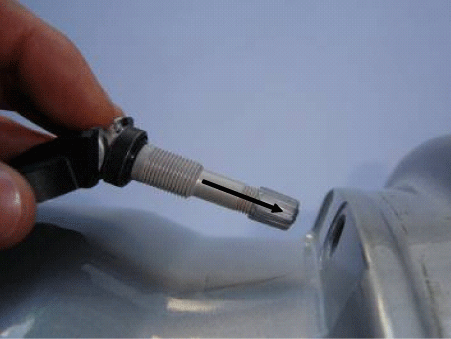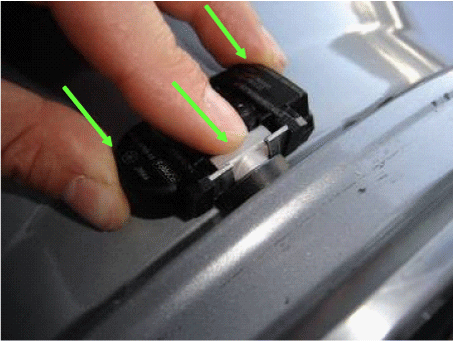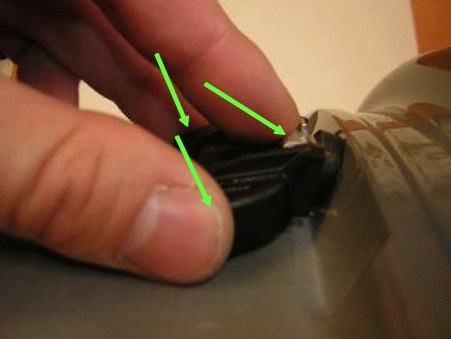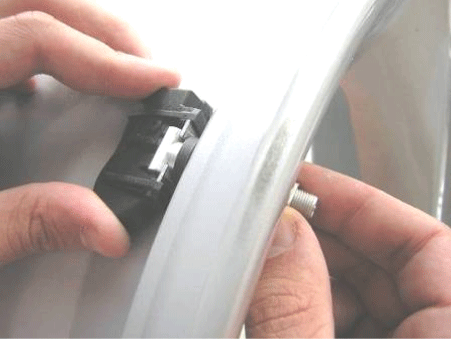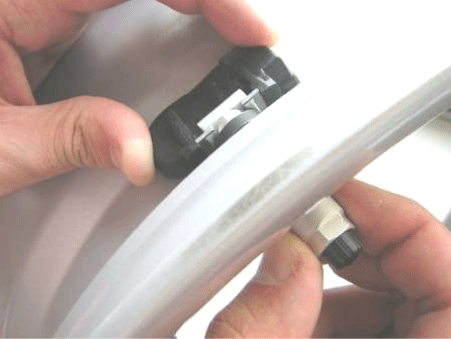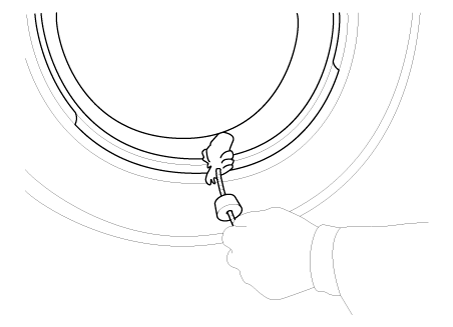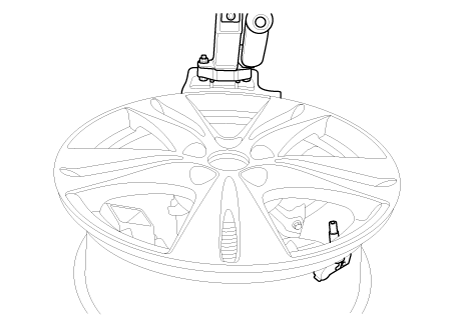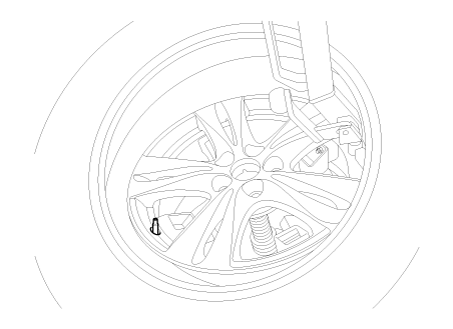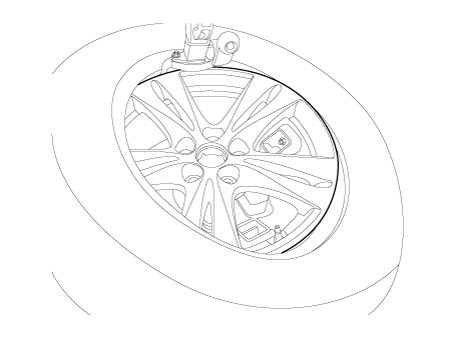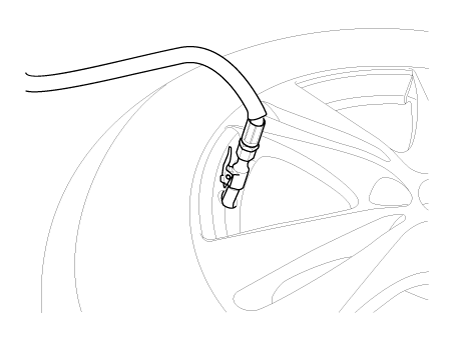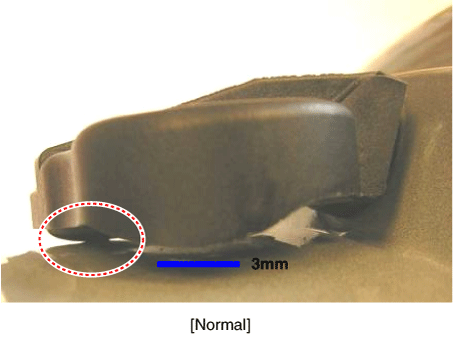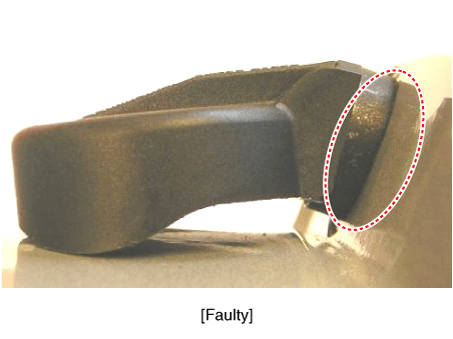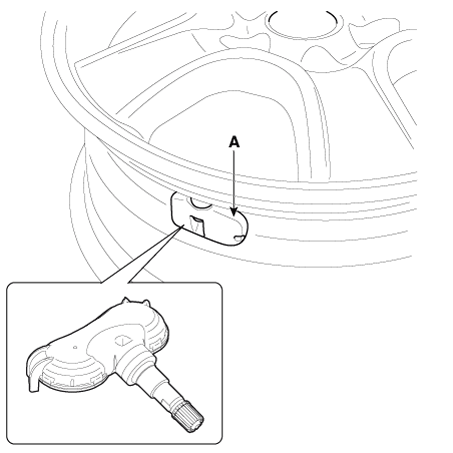Kia Sportage: Tire Pressure Monitoring System / TPMS Sensor Repair procedures
Kia Sportage QL (2015-2025) Service Manual / Suspension System / Tire Pressure Monitoring System / TPMS Sensor Repair procedures
| Removal |
| 1. |
Remove the valve core and deflate the tire.
|
| 2. |
Remove the side of the tire bead area from the wheel using tire changing
machine .
|
| 3. |
Rotate the wheel clockwise.
|
| 4. |
Check for deviation of the valve (air inlet portion in silver) during
transportation and assemble the valve in the indented state from the
original position (metal brackets).
|
| 5. |
To prevent the valve from rotating and deviating the set position while
the nut is being tightened, push the valve into the set position (inside
the metal brackets). Tigthen to the specified torque (8 Nm) and do not
reuse the nut.
|
| 6. |
Push the valve into the valve hole so that the seal washer touches the
rim.
|
| 7. |
While holding the housing with two fingers, push in the valve in the
axial direction with another finger.
|
| 8. |
The housing laser marking should be visible.
|
| 9. |
When the valve is fully inserted, start tightening the nut several times
by hand while keeping the sensor contacting the rim.
|
| 10. |
Mount the nut using a tool while maintaining the position of the valve
and the sensor.
|
| 11. |
Apply tire soap or lubrication to the top and bottom tire beads.
|
| 12. |
To fit the bottom bead, position the sensor at the 5 o’clock position
relative to the head on the tire changing machine.
|
| 13. |
Place the tire on the rim so the bottom bead touches the edge of the
rim after the sensor (@6 o’clock). Rotate the rim clockwise, and push
down on the tire at the 3 o’clock position to fit bottom bead.
|
| 14. |
After bottom bead is on tire, rotate the rim until the sensor is at
the 5 o’clock position relative to the head on the tire changing machine.
Push down on the tire at the 3 o’clock position and rotate the rim clockwise
to fit the top bead.
|
| 15. |
Inflate the tire until both beads seat.
|
| 16. |
In case of TPMS sensor failure, TPMS sensor learning is needed. After
replacing faulty sensor with a new unit, perform TPMS sensor learning.
|
| Inspection |
| Inspection after installing TPMS sensor |
| 1. |
Seal washer must be compressed on the outer surface of rim hole.
|
| 2. |
The lower part of the valve must locate in the set position (within
metal bracket) of the housing.
|
| 3. |
One or more points of the housing must be contacting the surface of
the rim.
|
| 4. |
The mounting height of the housing must not exceed the sill of the rim.
|
| Replacement |
| Repair tire after using the Tire Mobility Kit (TMK) |
When the TPMS warning lamp OFF
| 1. |
Remove the TMK repaired tire, wheel and TPMS sensor.
(Refer to "Tire removal")
|
| 2. |
Remove the sealant on the wheel and TPMS sensor (A) completely.
|
| 3. |
Install the TPMS sensor to the new tire.
|
| 4. |
Check for normal operation of TPMS system.
|
When the TPMS warning lamp ON
| 1. |
Remove the TMK repaired tire, wheel and TPMS sensor.
(Refer to "Tire removal")
|
| 2. |
Remove the sealant on the wheel and TPMS sensor (A) completely.
|
| 3. |
Install the TPMS sensor to the new tire.
|
| 4. |
Check the tire pressure using the electrical tire pressure gauge.
|
| 5. |
Check the tire pressure of TPMS sensor using the GDS.
|
| 6. |
If the difference between two checked pressures in the above is not
more than 2 psi, TPMS sensor is normal. Reinstall it to new tire.
|
| 7. |
If the difference between two checked pressures in the above is more
than 2 psi, TPMS sensor is abnormal. Install new TPMS sensor to new
tire.
|
| 8. |
Check for normal operation of TPMS system.
|
| Diagnosis procedure by using diagnostic device |
The main contents of diagnostic method using diagnostic device are as follows:
| 1. |
Connect self-diagnosis connector (16 pins) located in the lower driver
side crash pad to self-diagnosis device, and then turn on the self-diagnosis
device after key is ON.
|
| 2. |
Select the "vehicle model" and "TPMS" on GDS vehicle selection screen,
then select OK.
|
[Register Sensor initialization]
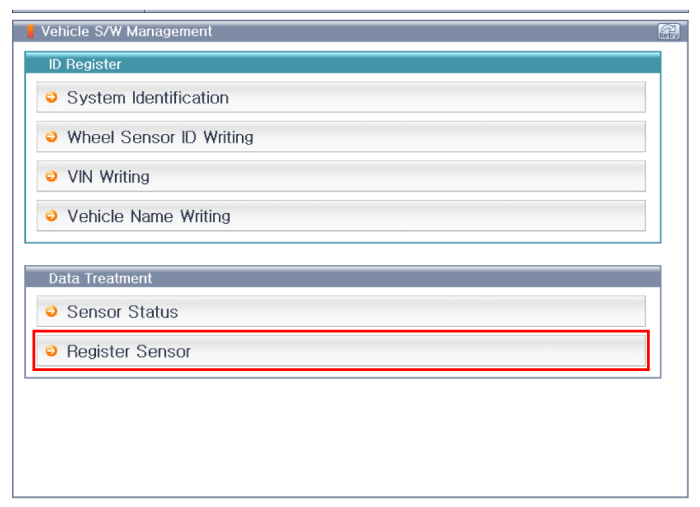
[Register Sensor function description]
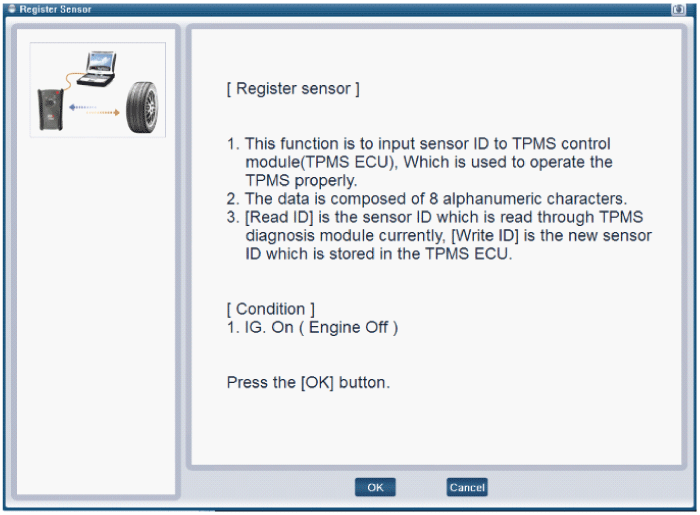
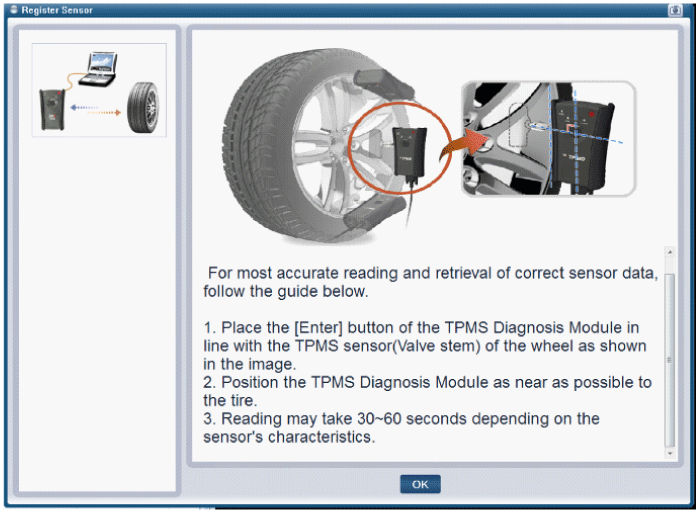
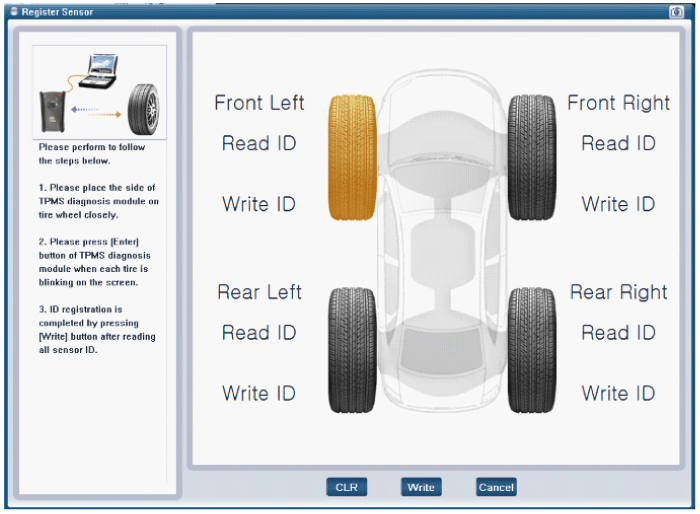
|
[Sensor Status initialization]
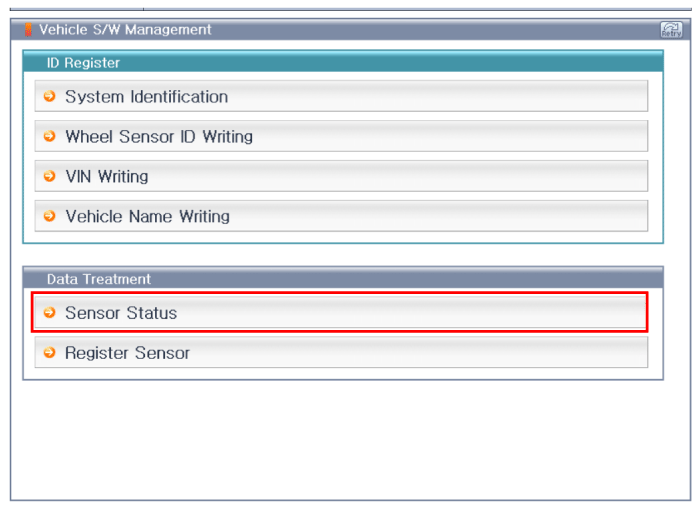
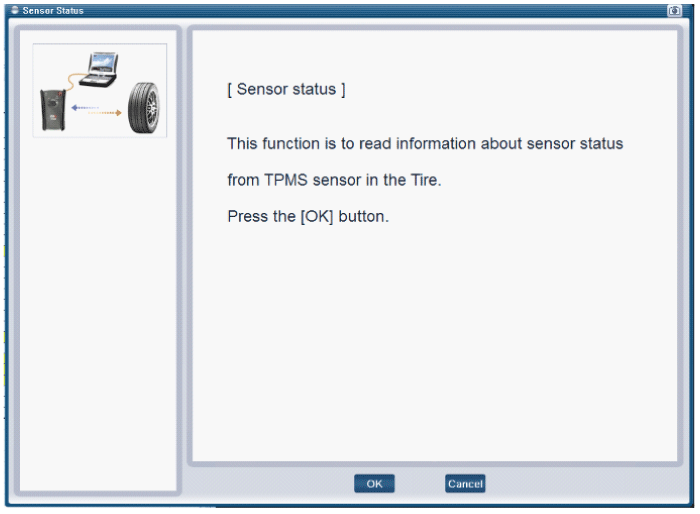
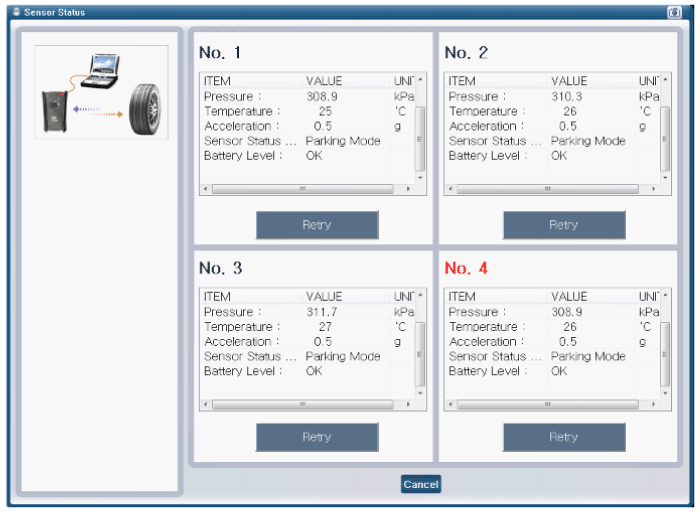
|
 TPMS Sensor Description and operation
TPMS Sensor Description and operation
Description
1.
Function
•
By detecting the pressure, temperature, acceleration, and battery
condition, transmit informat ...
 TPMS Receiver Description and operation
TPMS Receiver Description and operation
Description
1.
Mode
(1)
Virgin State
•
The receiver as a sole part is shipped ...
Other information:
Kia Sportage QL (2015-2025) Service Manual: Positive Crankcase Ventilation (PCV) Valve Repair procedures
Removal 1. Disconnect the PCV hose (A). 2. Remove the PCV valve (B). Inspection 1. Insert a thin stick (A) into the PCV valve (B) from the threaded side to check that the plunger ...
Kia Sportage QL (2015-2025) Owners Manual: Distributing the sealant
11. Immediately drive approximately 4~6 miles (7~10 km or, about 10 min) to evenly distribute the sealant in the tire. Do not exceed a speed of 50 mph (80 km/h). If possible, do not fall below a speed of 12 mph (20 km/h). While driving, if you experience any unusual vibration, ride disturbance ...
Copyright © www.ksportagegl.com 2015-2025


